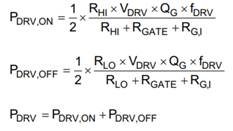This part is failing at random times throughout the motor drive cycle. The failure is exhibited by bubbling and cracking in the part. Clearly a sign of overheating, probably caused by an over-voltage condition or negative voltage on one of the pins. Typically the failure is associated with a particular phase, 4 out of 6 on the same phase. I am attaching both my schematic and layout. Any help solving this would be grand.
-
Ask a related question
What is a related question?A related question is a question created from another question. When the related question is created, it will be automatically linked to the original question.


